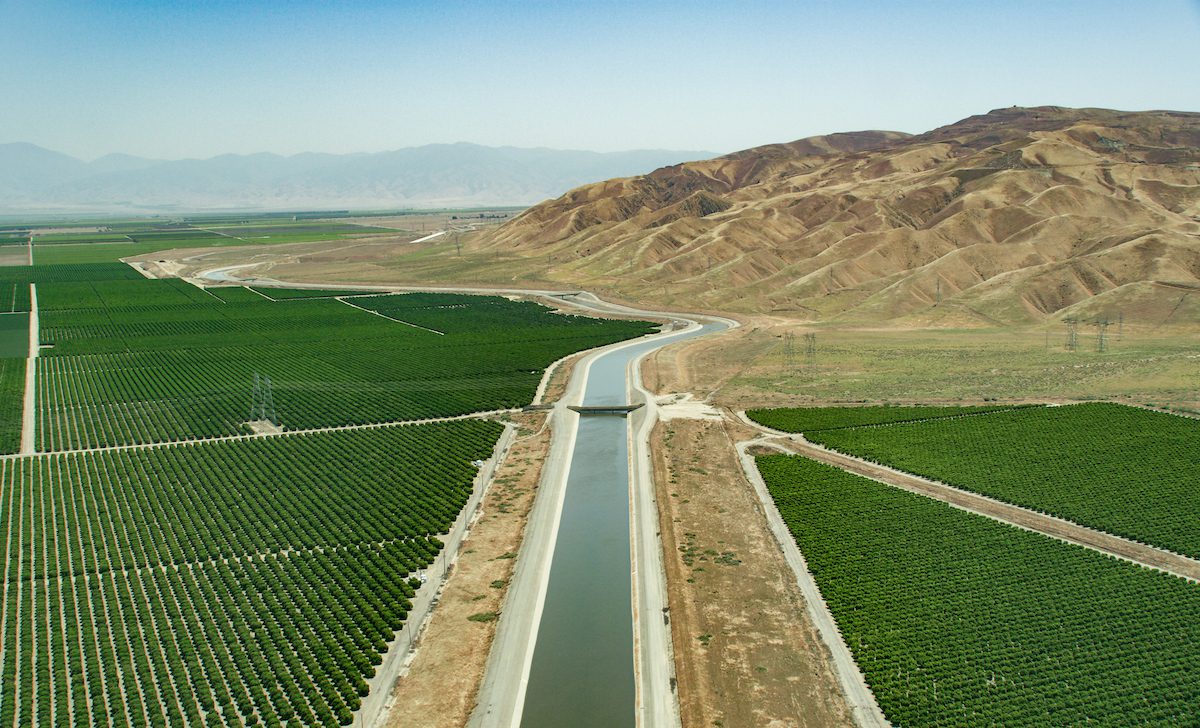- DWR releases final 2023 State Water Project Delivery Capability Report.
- Report warns of a potential 23% decline in SWP delivery capacity within 20 years due to climate change.
- Decline equates to roughly 496,000 acre-feet annually, enough for 1.7 million homes.
August 1, 2024 — The California Department of Water Resources (DWR) yesterday released its final 2023 State Water Project (SWP) Delivery Capability Report, highlighting a potential 23% decrease in the SWP’s water delivery capacity within the next 20 years. This decline, attributed to shifting flow patterns and extreme weather events resulting from climate change, could significantly affect California’s water supply.
Implications of the Decline.
A 23% reduction would translate to a loss of approximately 496,000 acre-feet of water annually, enough to supply 1.7 million homes for a year. This underscores the urgency for California to bolster its water supplies to compensate for potential SWP losses, considering projects like the Delta Conveyance Project, Sites Reservoir, desalination initiatives, and more.
DWR Director Karla Nemeth emphasized the necessity of modernizing and upgrading aging infrastructure to capture water during wet periods. “The State Water Project service area amounts to the world’s eighth-largest economy and includes more than 8 million Californians living in disadvantaged communities,” she said
emphasized the necessity of modernizing and upgrading aging infrastructure to capture water during wet periods. “The State Water Project service area amounts to the world’s eighth-largest economy and includes more than 8 million Californians living in disadvantaged communities,” she said . “Modernizing the State Water Project is critical to delivering on the human right to water in California.”
. “Modernizing the State Water Project is critical to delivering on the human right to water in California.”
The Impact of Climate Change.
Built in 1960, the SWP, a 700-mile network of canals, dams, reservoirs, pumping plants, and power plants, serves 27 million Californians and 750,000 acres of farmland. Various factors influence its water delivery capability, including population growth, legislation, environmental requirements, and, most notably, the changing climate.
SWP Deputy Director John Yarbrough highlighted the need for adaptation and investment in the SWP to address 21st-century climate conditions. He stated, “We need to continue to adapt and invest in the SWP, so that we can add flexibility and resilience for 21st century conditions and we can avoid these losses in reliability.”
highlighted the need for adaptation and investment in the SWP to address 21st-century climate conditions. He stated, “We need to continue to adapt and invest in the SWP, so that we can add flexibility and resilience for 21st century conditions and we can avoid these losses in reliability.”
Innovative Approaches in the Report.
The 2023 Delivery Capability Report introduces innovative approaches to assess current climate change impacts and future climate scenarios. It includes a method to account for operational changes due to existing climate change and develops a range of future climate scenarios. Both approaches underwent independent peer review and represent significant improvements over previous methods.
Uses of the Report.
The Delivery Capability Report is a crucial resource for water supply planning within and outside the SWP. It informs drought planning efforts by both the SWP and public water agencies receiving SWP and Central Valley Project water. Additionally, it serves as a valuable input for various water management plans, including Sustainable Groundwater Management Plans, Urban Water Management Plans, Agricultural Water Management Plans, and Integrated Regional Water Management Plans.
DWR’s Proactive Measures.
DWR is developing a Climate Adaptation Plan as part of the state’s long-term planning efforts. This plan will integrate key adaptation strategies, including the Delta Conveyance Project and new and expanded storage opportunities above and below ground. The Adaptation Plan is expected to be published later this year.
DWR is committed to supporting the state’s comprehensive approach to building a resilient water supply system. It advocates for an “all-of-the-above” strategy, encompassing the Delta Conveyance Project, Sites Reservoir, groundwater recharge, desalination, water recycling, and ongoing water conservation efforts.
DWR urges all SWP water users and local groundwater sustainability agencies to collaborate and proactively utilize the insights from this report for their own planning and adaptation initiatives.
Where to Get the Report.
The 91-page Delivery Capability Report is available on DWR’s website.
Image via the California Department of Water Resources : The aerial view looks southeast over the California Aqueduct and agricultural fields, near Highway 166, and the John R. Teerink Wheeler Ridge Pumping Plant in Kern County, California. Photo taken May 13, 2023.
: The aerial view looks southeast over the California Aqueduct and agricultural fields, near Highway 166, and the John R. Teerink Wheeler Ridge Pumping Plant in Kern County, California. Photo taken May 13, 2023.


Leave a Reply